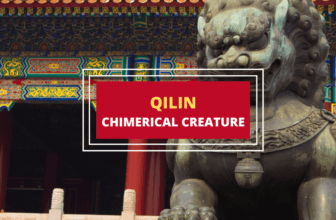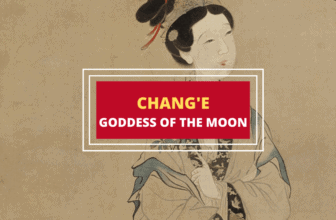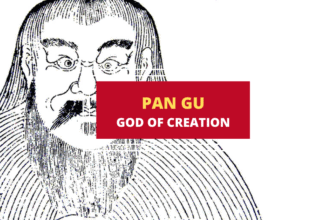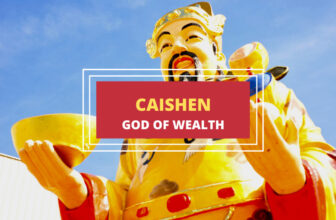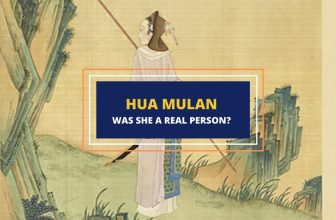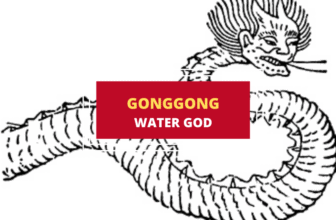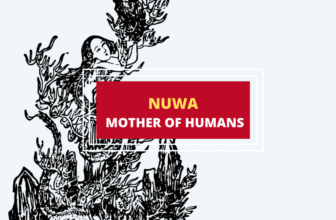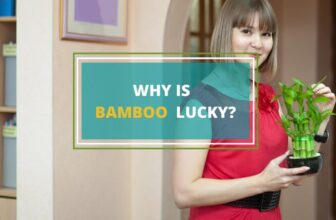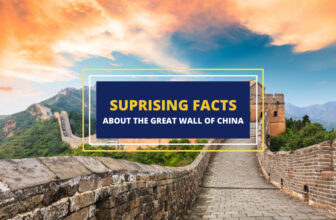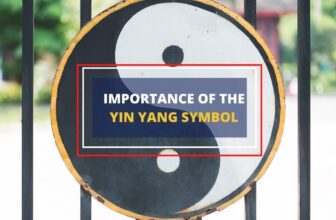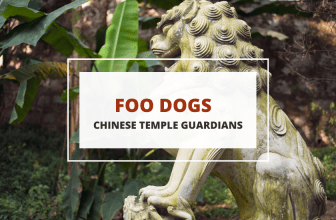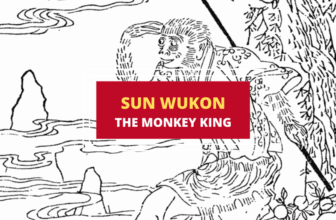Chinese mythology, religion, and philosophy go back thousands of years and describe one of the oldest, most diverse, and beautiful cultures on the planet. Naturally, trying to encompass the entirety of Chinese mythology is impossible even in an entire library, let alone in a single article. Nevertheless, we will try to lightly touch on the very surface of the main aspects of Chinese mythology here while covering the different deities, characters, emperors, myths and stories, as well as religions and philosophical currents of Chinese mythology in separate texts.
More Than Just “A Mythology”
Unlike the mythologies of most other cultures, when we talk about China, there isn’t just one mythology to deal with. Throughout history, China has seen multiple religions rise and battle for influence in the empire. These have co-existed for thousands of years, and influenced both each other and Chinese mythology, philosophy, and culture.
As a result, some Chinese myths belong either exclusively to one of its religions or sub-cultures, while many others are shared between different religions and mythological cycles. This makes categorizing the different myths, characters, and themes in Chinese mythology even more complicated.
The Different Religious, Mythological, and Philosophical Traditions of China
China is the home of multiple religions, all with their influence on the overall Chinese mythology.
Taoism
Taoism or Daoism is one of the core spiritual and philosophical traditions of China. The basis of Taoism is the idea of living in harmony with Tao (or Dao), i.e. in harmony with The Way.
In Taoism, Tao is the substance of everything in the Universe, it’s the source and the core pattern of life. To become in harmony with The Way in Taoism means to start living in the rhythm (Tao) of the Universe.
Taoism is a type of pantheistic religion in that it doesn’t have a personal god or gods that purposefully and intelligently guide the events in the world. Instead, the Way/Tao is unplanned and it’s just an aspect of the Universe very much in the same way as the laws of nature.
We can trace Taoism’s roots back to the 4th century BCE. Even though it is a pantheistic religion, Taoism still has “deities”, which can be viewed as gods, demi-gods, prophets, spiritual teachers, or mythological beings, depending on how you look at them. One of the many examples are the Three Pure Ones who are viewed as the Taoist Trinity. Lao Tzu is another such example, as is the famous Jade Emperor and many others.
Taoist philosophy is very deeply entrenched in Chinese culture as are some philosophies that try to counter it.
Buddhism
Buddhism came into China somewhere around the 1st century CE together with many new ideas about deities and supernatural beings from the south. The introduction of the Four Heavenly Kings concept to Chinese mythology was influential, as was the main Buddha himself – Shakyamuni Buddha.
Like Taoism, Buddhism is also a pantheistic religion in which the Universe is guided by certain philosophical principles but not by a personal god or an intelligent planner. Still, Buddhism also has holy figures, supernatural beings, and even what could be viewed as gods.
One of the most significant of them is Guanyin, also known as Kwan Yin or the Goddess of Mercy. Guanyin is an incarnation of Avalokiteśvara from Indian tradition but in Chinese mythology, she’s believed to be based on a young Chinese woman’s life. She’s the subject of hundreds of Buddhist texts and eventually even became a Taoist immortal, showing just how the mythologies of different Chinese religions interacted with one another and even exchanged deities.
Confucianism
Also called Ruism, Confucianism isn’t a religion but is an influential system of thought and behavior that originated in ancient China around the 6th-5th century BCE – before both Taoism and Buddhism.
Confucianism is centered around the idea of ancestor veneration, i.e. the worship of the ancestors. This is also viewed as a form of “Chinese patriarchal religion” and – in many ways – it can be said that it’s alive and thriving to this day.
Confucius himself later became a major figure of worship in Taoism as well. The Confucianism movement is also said to be based on the myth of the legendary Emperors Yao and Shun, which further intertwines the Confucianism philosophy with Chinese mythology.
Shamanism
Certain shamanistic currents have also been a part of Chinese mythology over the centuries even if they weren’t as overwhelmingly influential as other religions and philosophies.
Mongolian shamanism, for example, was a near-constant influence from the north as was the Hmong shamanism of the Miao people in southern China. The famous Qing Chinese dynasty that ruled between the 17th and up until the early 20th century also had certain shamanistic beliefs.
Chinese Philosophy
To explain Chinese philosophy in just a couple of sentences is all but impossible. Formed by multiple religions and philosophical traditions over many millennia, grains of Chinese philosophy can be found in every myth, every story, every piece of art, and even by most everyday mundaine traditions of the Chinese people.
An overly simplistic way to describe Chinese philosophy would be to divide it into two relatively equal sides – Liberal philosophy and Conservative philosophy.
Liberal philosophy China) is typically associated with individualism and change. An example is the mythology of divination such as that of the dragon horse, the deliverer of the eight Bagua diagrams to Fu Xi. Chinese Liberal philosophy focuses on individual freedom, individual empowerment as seen in the Yi Jing (Book of Changes), as well as Naturalism and Taoism.
Conservative philosophy, on the other hand, is more focused on Confucianism, ceremonial observances, China’s ruling hierarchy, Emperors, and bureaucracy, and the subordination of the individual to the social groups around them, be they family, town, state, or country.
This distinction between the two main philosophical currents is, of course, very basics and limited as the two often interact and exchange ideas.
Chinese Cosmology
China has seen many different Creation myths and views on cosmology which is natural for such a large and old culture with multiple religious traditions flowing through it.
Probably the most typical cosmological view in Chinese mythology portrays the world as a square earth surrounded by a round sky with the latter being supported by several pillars made out of mountains and giant trees. The realm of Heaven which most Chinese religions have is located above the round sky and it’s typically run by a Supreme Emperor with a complex hierarchical structure beneath Him, similar to how China was governed.
Below the square earth, there is a vast Underground called Diyu, Hell, Yellow Springs, or several other terms. Both Taoism and Chinese Buddhism incorporated versions of such an Underground in their mythologies over time. Like the Heaven above, this Diyu underground was also the home of a complex hierarchy and bureaucracy with lots of kings, judges, secretaries, and various legendary and mythological figures.
The Chinese Calendar
The famous Chinese calendar includes 12 zodiac signs: the Rat, Ox, Tiger, Rabbit, Dragon, Snake, Horse, Goat, Monkey, Rooster, Dog, and Pig. Each can have several possible associated elements – Wood, Fire, Earth, Metal, or Water. Each zodiac can also come as either Yin or Yang sign.
All these elements make for a lot of complex combinations that make up the various years of the Chinese calendar. There are also many spiritual or divine genii that act as “guardians” of specific years, months, days, or even hours.
The Chinese calendar was developed somewhere between 771 and 476 BC with people using solar calendars before that. The first year in the official Chinese calendar is believed to be 841 BCE or The Year of the Metal Monkey.
The Deifying of Chinese Emperors
Much of Chinese mythology deifies Chinese emperors and rulers as demi-gods, similar to how the ancient Egyptians viewed their pharaohs as gods. A lot of this stems from the Conservative/Confucianist side of Chinese philosophy which reveres tradition, hierarchy, and the ancestors. As a result of that, not only were most ancient kings and emperors revered and worshipped as gods but even the living emperor at any given time was viewed as a god or a demi-god.
This series of articles cover the most popular stories and figures of Chinese mythology in an easy to understand and engaging way. We discuss their origins, symbolism, importance and relevance today.
